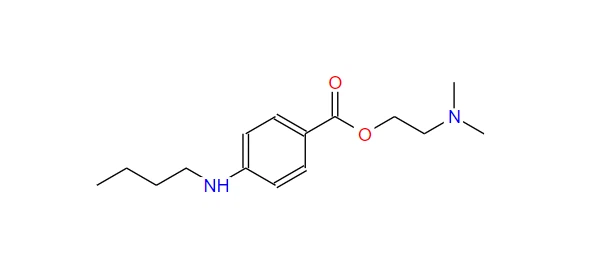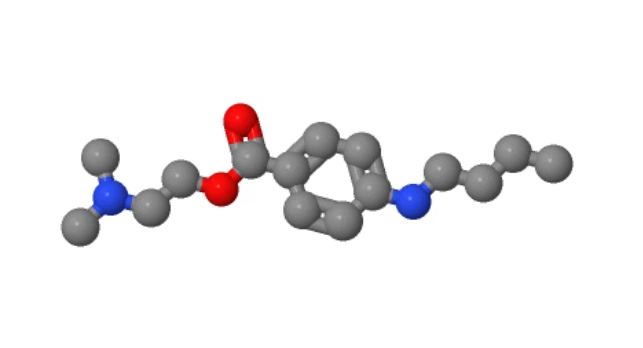When it comes to ear discomfort, many people seek relief through various means. One question that often arises is whether tetracaine, a powerful local anesthetic, can be used in the ear. In this comprehensive guide, we'll explore the use of tetracaine in ear-related applications, its benefits, and potential risks. We'll also delve into the importance of using pure tetracaine and how it affects its efficacy and safety.
|
|
|
tetracaine and its applications
Tetracaine is an intense nearby sedative having a place with the amino ester bunch. It's known for its capacity to give speedy and viable desensitizing in different operations. It is frequently used in dermatology and ophthalmology, but many people are interested in its application to problems with the ears.
Particularly because of its concentrated form and lack of additives, pure tetracaine is highly valued in medical settings. This purity guarantees maximum efficiency and reduces the likelihood of side effects. The product's quality and purity become even more important when considering its application to delicate areas like the ear.
Tetracaine works by obstructing sodium diverts in nerve cells, actually forestalling the transmission of torment signals. Although its use should be carefully considered and administered under the supervision of a professional, this mechanism makes it an appealing option for relieving ear discomfort.
tetracaine in ear treatments: benefits and considerations
Medical research and clinical practice have discussed the use of tetracaine in ear-related treatments. While it's not regularly endorsed for at-home use in ear care, it has found applications in specific operations and conditions connected with the ear.
One of the essential advantages of involving unadulterated tetracaine in ear medicines is its quick beginning of activity. In emergency situations or when immediate pain relief is required, this quick-acting property can be especially helpful. In any case, it's vital for note that the utilization of tetracaine in the ear ought to constantly be under the immediate oversight of a medical care proficient.
A few likely uses of tetracaine in ear-related techniques include:
Myringotomy (eardrum incision) procedures
Tympanocentesis (middle ear fluid aspiration)
Removal of foreign bodies from the ear canal
Management of acute otitis externa (swimmer's ear)
While these applications showcase the potential benefits of tetracaine in ear treatments, it's crucial to understand that its use comes with certain risks and considerations. The delicate nature of the ear structure requires careful administration and dosage control to prevent potential complications.
safety precautions and professional guidance
When considering the use of pure tetracaine or any form of tetracaine in the ear, safety should be the top priority. The ear is a sensitive organ, and improper use of any medication, including local anesthetics, can lead to serious complications.
Here are some important safety considerations:
Professional Administration
Tetracaine should only be administered by or under the direct supervision of a qualified healthcare professional due to its potent nature and potential risks. As a local anesthetic, tetracaine requires precise dosing and administration to achieve the desired numbing effect while minimizing potential side effects. Only trained professionals have the expertise to manage the dosage accurately and respond promptly to any adverse reactions that may occur.
Allergy Testing
Before using tetracaine, it's crucial to check for any allergies to local anesthetics. Some individuals may have allergic reactions or sensitivities to such drugs. Symptoms of an allergy can range from mild skin rashes to severe, life-threatening reactions. By identifying any potential allergies beforehand, healthcare providers can avoid adverse reactions and select alternative medications if necessary. This precaution helps to protect the patient and ensures that the anesthesia will be effective and safe.
Existing Ear Conditions
Patients with pre-existing ear conditions, such as perforated eardrums or chronic ear infections, may require special considerations before using tetracaine.
Concentration and Purity
The use of pure tetracaine is preferable in medical settings to ensure maximum efficacy and minimize the risk of adverse reactions from additives.
Monitoring
After application, patients should be monitored for any signs of adverse reactions or complications.
While unadulterated tetracaine has advantages in terms of intensity and reduced risk of additional substance-related incidental effects, it also requires careful handling and precise dosing. This is yet another reason why its use should be restricted to professional medical settings.
Anyone who is experiencing pain or discomfort in their ears should always begin by consulting a medical professional. They are able to precisely determine the underlying cause and recommend the most effective treatment strategy, which may or may not include the application of tetracaine or other types of local anesthetics.
In conclusion, although pure tetracaine can be a useful tool for some medical procedures involving the ears, it should always be used with caution and under the supervision of a medical professional. When managing the delicate ear designs, the benefits of its rapid activity and potent sedative properties should be balanced against potential risks.
|
|
|
As more research is done in this area, tetracaine may find more specific applications in ear treatments. Be that as it may, for now, it is as yet a specific instrument utilized by clinical experts, not a typical choice for at-home ear care.
Remember that proper ear health care and prevention are essential. Getting regular checkups with an ENT specialist, keeping your ears clean, and protecting your ears from loud noises and water openness can all help prevent common ear problems.
If you're having persistent problems with your ears or want to learn more about possible treatments, don't be afraid to talk to a doctor. They can give tweaked direction and treatment plans uniquely crafted to your specific prerequisites, ensuring the prosperity and flourishing of your ears. For inquiries regarding pure tetracaine or for additional information or assistance, please contact us at Sales@bloomtechz.com.
references
Becker, D. E., & Reed, K. L. (2006). Essentials of local anesthetic pharmacology. Anesthesia progress, 53(3), 98-109.
Patel, A., & Gaines, S. (2018). Bradycardia and Asystole Following Topical Lidocaine and Tetracaine Administration. The Journal of Emergency Medicine, 55(5), 691-694.
Roland, P. S., & Marple, B. F. (1997). Disorders of the external auditory canal. Journal of the American Academy of Audiology, 8(6), 367-378.
Satoh, Y., Satoh, T., & Fujimoto, S. (2008). Comparative study of tetracaine and lidocaine using etidocaine as an internal standard: Quantification in human serum by high-performance liquid chromatography. Journal of Chromatography B, 867(1), 49-53.
Whitcomb, M., & Drummond, C. (1997). Topical anesthetics for minor ear procedures. American Family Physician, 56(8), 2057-2062.





